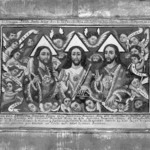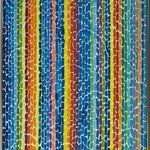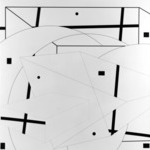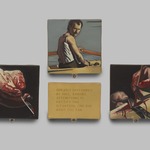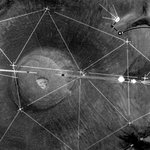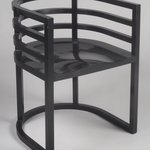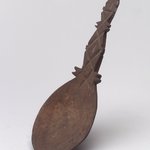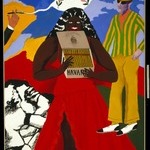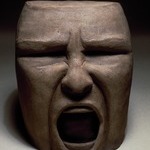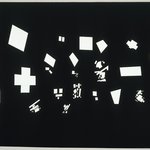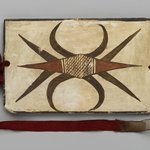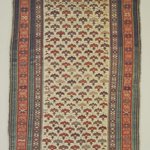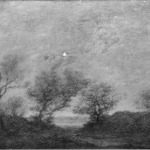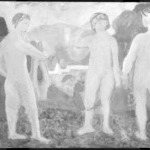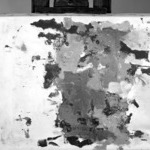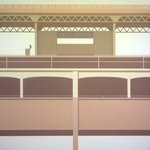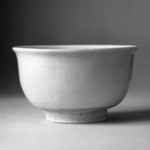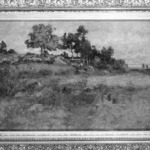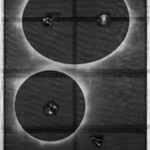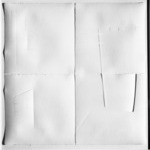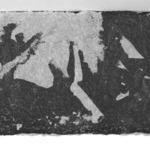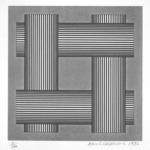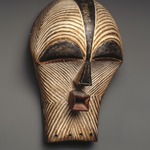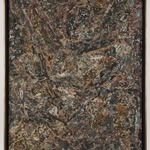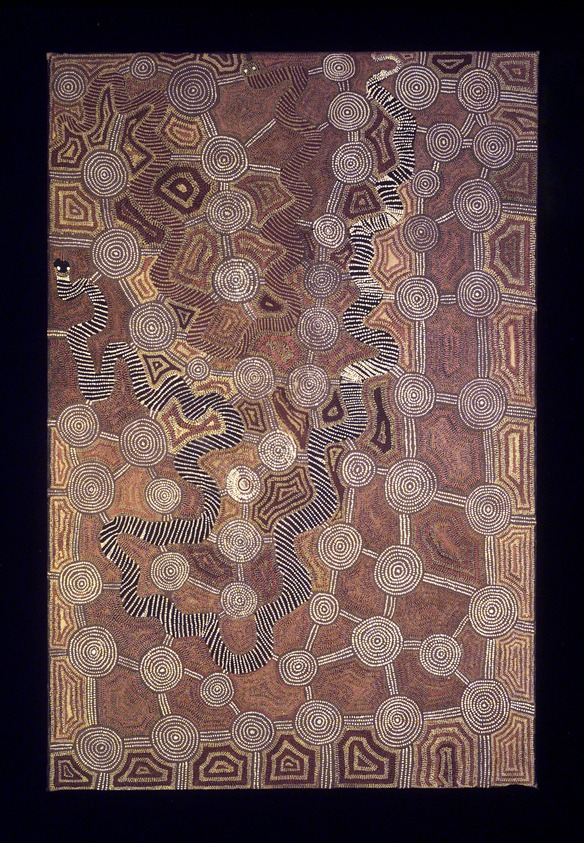
This image is presented as a "thumbnail" because it is protected by copyright. The Brooklyn Museum respects the rights of artists who retain the copyright to their work.
Untitled
Contemporary Art
Geometric shapes defined by densely brushed dots fill this canvas by the contemporary Australian Aboriginal artist Yala Yala Gibbs Tjungurrayi. Part of an artistic movement that began in the early 1970s with the Pintupi clan, of which he is a member, Tjungurrayi adopted the format of painting on canvas to depict what might be considered a cosmological landscape that encompasses the past, present, and future. The serpents relate to ancestors who created the waterholes, indicated by concentric circles, at a specific desert, with the background patterns representing its sand hills. These symbols are drawn from centuries-old cultural traditions of Australian indigenous peoples—including stories of creation, legends of ancestors, and daily customs—that are passed down orally or through ephemeral sand paintings.
CULTURE
Pintupi Tribe
MEDIUM
Acrylic on canvas
DATES
1987
DIMENSIONS
72 x 48 in. (182.9 x 121.9 cm) (show scale)



SIGNATURE
Upper right verso: "Yala Yala" ; also inscribed verso: "P.T.A. - YY871103"
"P.T.A." stands for Papunya Tula Artists, an artist cooperative with whom this artist was active. “YY871103” identifies Yala Yala as the artist, 87 as the year made, and 1103 as the particular piece.
[MV 7-25-16]
COLLECTIONS
Contemporary Art
ACCESSION NUMBER
88.35
CREDIT LINE
Purchased with funds given by AustArt
MUSEUM LOCATION
This item is not on view
CAPTION
Yala Yala Gibbs Tjungurrayi (Australian, 1925–1998). Untitled, 1987. Acrylic on canvas, 72 x 48 in. (182.9 x 121.9 cm). Brooklyn Museum, Purchased with funds given by AustArt, 88.35. © artist or artist's estate (Photo: Brooklyn Museum, 88.35.jpg)
IMAGE
overall, 88.35.jpg. Brooklyn Museum photograph
"CUR" at the beginning of an image file name means that the image was created by a curatorial staff member. These study images may be digital point-and-shoot photographs, when we don\'t yet have high-quality studio photography, or they may be scans of older negatives, slides, or photographic prints, providing historical documentation of the object.
RIGHTS STATEMENT
© artist or artist's estate
Copyright for this work may be controlled by the artist, the artist's estate, or other rights holders. A more detailed analysis of its rights history may, however, place it in the public domain.
The Museum does not warrant that the use of this work will not infringe on the rights of third parties. It is your responsibility to determine and satisfy copyright or other use restrictions before copying, transmitting, or making other use of protected items beyond that allowed by "fair use," as such term is understood under the United States Copyright Act.
For further information about copyright, we recommend resources at the United States Library of Congress, Cornell University, Copyright and Cultural Institutions: Guidelines for U.S. Libraries, Archives, and Museums, and Copyright Watch.
For more information about the Museum's rights project, including how rights types are assigned, please see our blog posts on copyright.
If you have any information regarding this work and rights to it, please contact copyright@brooklynmuseum.org.
RECORD COMPLETENESS
Not every record you will find here is complete. More information is available for some works than for others, and some entries have been updated more recently. Records are frequently reviewed and revised, and we welcome any additional information you might have.
